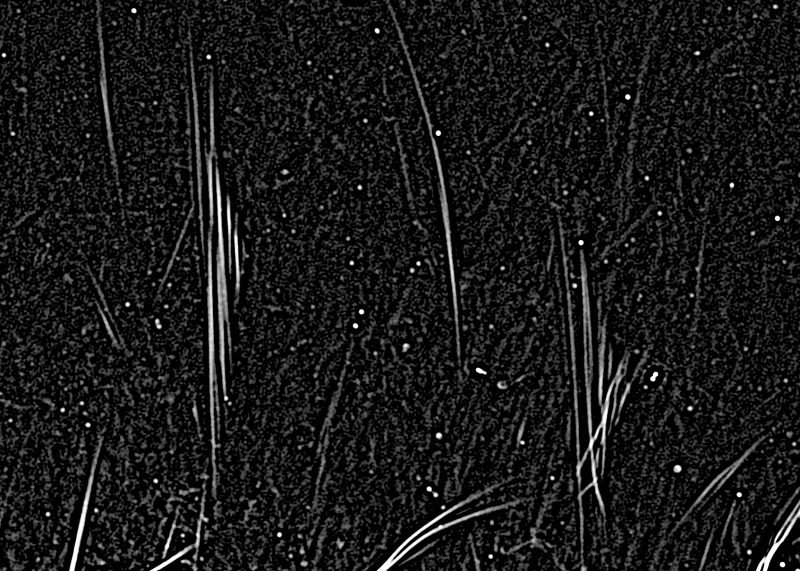
1,000 mysterious strands!
Maybe you saw the new mosaic image of the heart of our Milky Way galaxy last week. The South African Radio Astronomy Observatory (SARAO) released it on January 26, 2022. More than three years in the making, the image revealed the core of the Milky Way as we’ve never seen it before. And one of the most intriguing facets of the announcement was of a population of mysterious strands at the Milky Way’s heart. Northwestern University released more information about these odd strands. An astronomer there discovered them back in the 1980s. But the new image shows there’s a huge population of the strands, 10 times more than previously thought. Some stretch up to 150 light-years in length. And the new SARAO image shows them as highly organized, at times coming in clusters and in pairs, at times criss-crossing, at times curving, with some evenly spaced out “like strings on a harp.” What are they?
Of course, we don’t know. Astronomers never expected to find these strands, and we haven’t seen them before now in such abundance and detail. The astronomers did rule out supernovae as the source of the strange filaments, which are magnetic in nature. They think these magnetic filaments might have something to do with the 4-million-solar-mass black hole located at our galaxy’s heart. And/ or they might be related to the vast, radio-wave-emitting bubbles, also discovered at Northwestern in September of 2019. Specifically, they think the strands might be comprised of:
… cosmic ray electrons gyrating the magnetic field at close to the speed of light.
But that’s just an educated guess. The origin of the strands remains a mystery.
A new study of them is now available online and has been accepted for publication by The Astrophysical Journal Letters.

Originally spotted in 1984
Northwestern University astrophysicist Farhad Yusef-Zadeh spotted the first strands back in 1984. He commented in a statement:
We have studied individual filaments for a long time with a myopic [shortsighted or nearsighted] view. Just examining a few filaments makes it difficult to draw any real conclusion about what they are and where they came from.
Now, we finally see the big picture — a panoramic view filled with an abundance of filaments. This is a watershed in furthering our understanding of these structures.
This is the first time we have been able to study statistical characteristics of the filaments. By studying the statistics, we can learn more about the properties of these unusual sources.
If you were from another planet, for example, and you encountered one very tall person on Earth, you might assume all people are tall. But if you do statistics across a population of people, you can find the average height.
That’s exactly what we’re doing. We can find the strength of magnetic fields, their lengths, their orientations and the spectrum of radiation.
More images of the mysterious strands
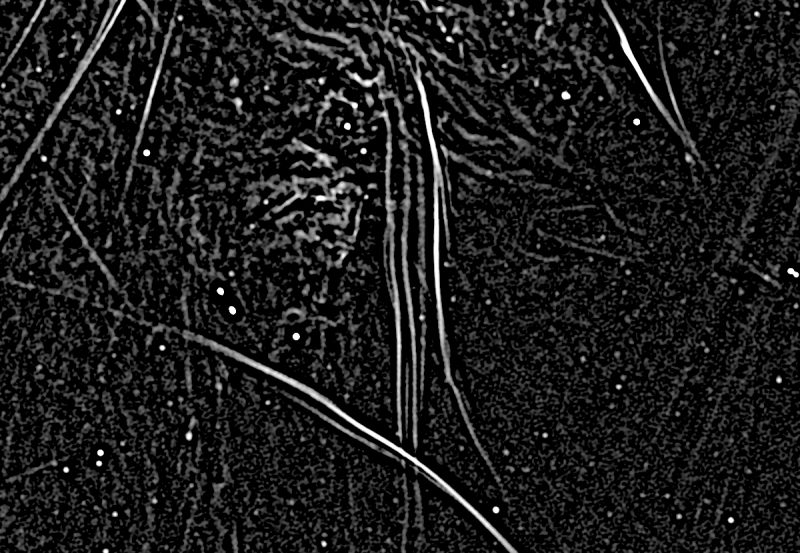
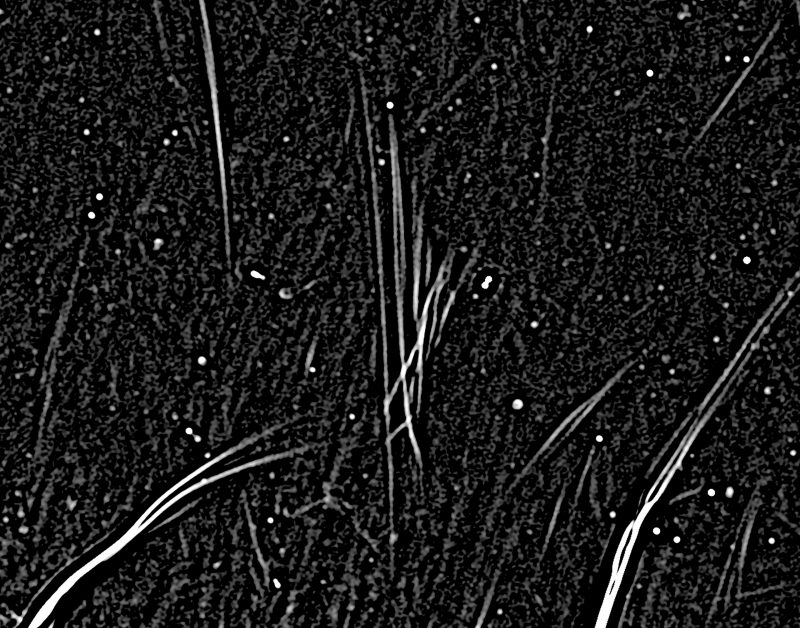
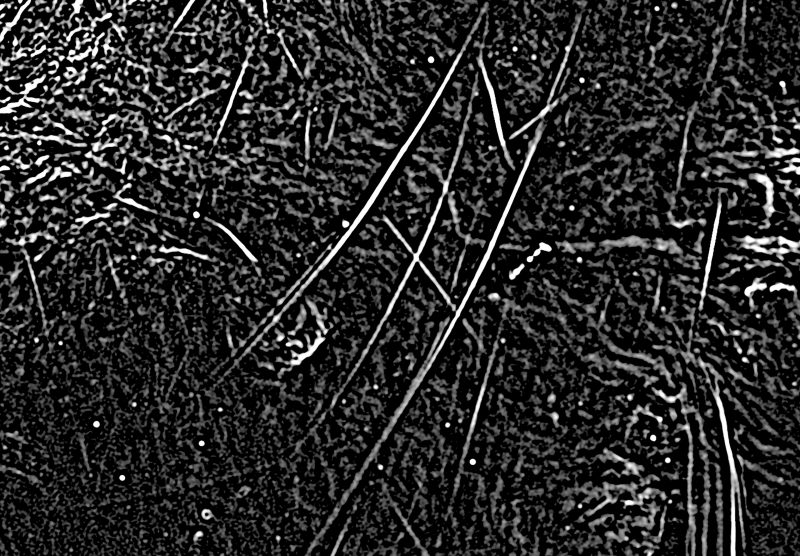
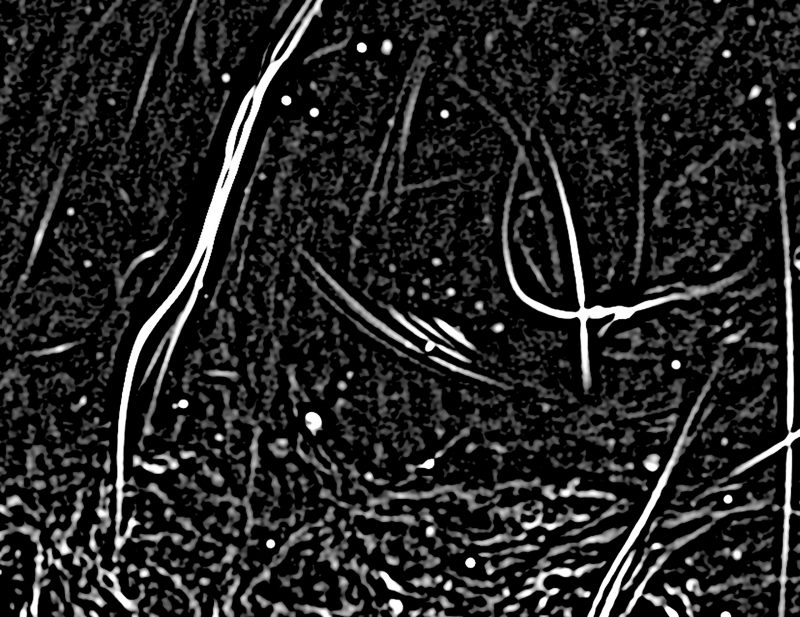
About the new Milky Way image
The new SARAO image of the Milky Way’s heart required 200 hours of time on the MeerKAT telescope in South Africa. Researchers pieced together a mosaic of 20 separate observations of different sections of the sky toward the center of the Milky Way galaxy, 25,000 light years from Earth. Oxford University astrophysicist Ian Heywood led the team that created the new image. It captures a lot more than just these strands. The image shows numerous phenomena, including outbursting stars, stellar nurseries and new supernova remnants. Heywood commented:
I’ve spent a lot of time looking at this image in the process of working on it, and I never get tired of it. When I show this image to people who might be new to radio astronomy, or otherwise unfamiliar with it, I always try to emphasize that radio imaging hasn’t always been this way, and what a leap forward MeerKAT really is in terms of its capabilities. It’s been a true privilege to work over the years with colleagues from SARAO who built this fantastic telescope.
To view the filaments at a finer scale, Yusef-Zadeh’s team used a technique to remove the background from the main image in order to isolate the filaments from the surrounding structures. The resulting picture astounded him, he said, adding:
It’s like modern art. These images are so beautiful and rich, and the mystery of it all makes it even more interesting.
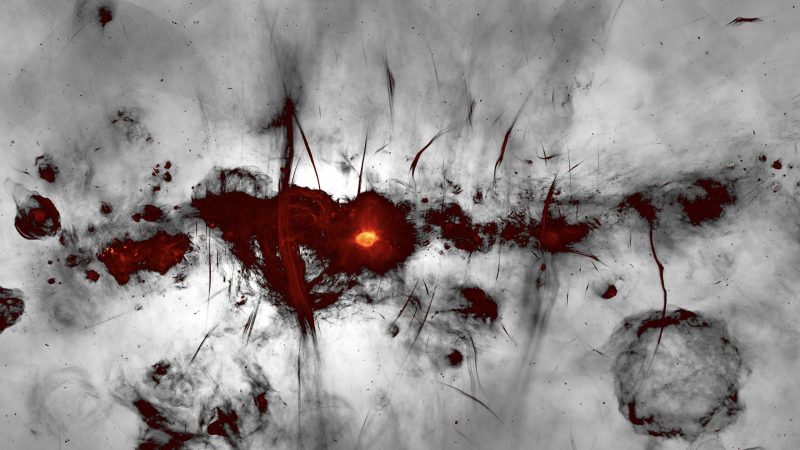
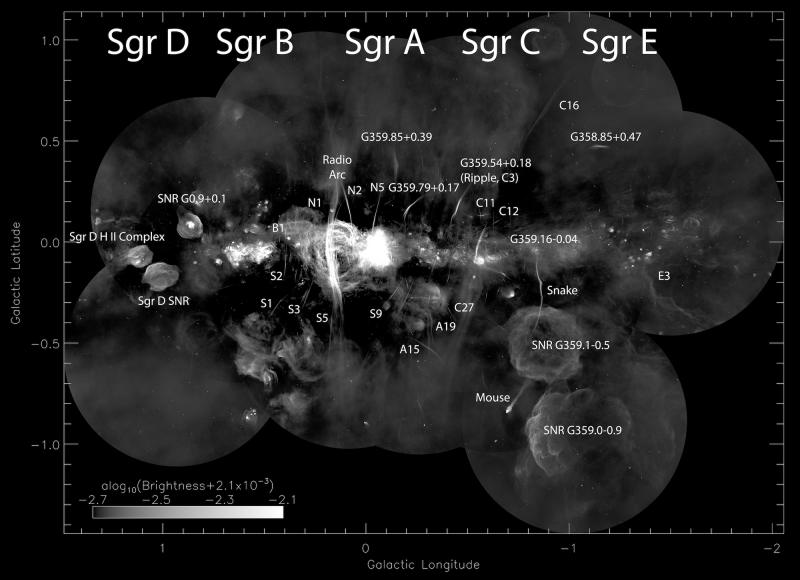
What we know
In their latest paper, Yusef-Zadeh and collaborators specifically explored the filaments’ magnetic fields and the role of cosmic rays in illuminating the magnetic fields. They explained:
The variation in radiation emitting from the filaments is very different from that of the newly uncovered supernova remnant, suggesting that the phenomena have different origins. It is more likely, the researchers found, that the filaments are related to past activity of the Milky Way’s central supermassive black hole rather than coordinated bursts of supernovae. The filaments also could be related to enormous, radio-emitting bubbles, which [we] discovered in 2019.
And, while [we] already knew the filaments are magnetized, now [we] can say magnetic fields are amplified along the filaments, a primary characteristic all the filaments share.
What we don’t know
Among the remaining mysteries, Yusef-Zadeh is particularly puzzled by how structured the filaments appear. Filaments within clusters are separated from one another at perfectly equal distances — about the distance from Earth to the sun. He mused:
They almost resemble the regular spacing in solar loops. “We still don’t know why they come in clusters or understand how they separate, and we don’t know how these regular spacings happen. Every time we answer one question, multiple other questions arise.
Yusef-Zadeh and his team also still don’t know whether the filaments move or change over time or what is causing the electrons to accelerate at such incredible speeds. He asked:
How do you accelerate electrons at close to the speed of light? One idea is there are some sources at the end of these filaments that are accelerating these particles.
Yusef-Zadeh and his team are currently identifying and cataloging each filament. The angle, curve, magnetic field, spectrum and intensity of each filament will be published in a future study. Understanding these properties will give the astrophysics community more clues into the filaments’ elusive nature.
Bottom line: Something new under the sun … under billions of suns! Scientists are probing the nature of 1,000 mysterious strands found at our Milky Way’s heart.
The post 1,000 mysterious strands revealed at the Milky Way’s heart first appeared on EarthSky.
from EarthSky https://bit.ly/3uavDfT

1,000 mysterious strands!
Maybe you saw the new mosaic image of the heart of our Milky Way galaxy last week. The South African Radio Astronomy Observatory (SARAO) released it on January 26, 2022. More than three years in the making, the image revealed the core of the Milky Way as we’ve never seen it before. And one of the most intriguing facets of the announcement was of a population of mysterious strands at the Milky Way’s heart. Northwestern University released more information about these odd strands. An astronomer there discovered them back in the 1980s. But the new image shows there’s a huge population of the strands, 10 times more than previously thought. Some stretch up to 150 light-years in length. And the new SARAO image shows them as highly organized, at times coming in clusters and in pairs, at times criss-crossing, at times curving, with some evenly spaced out “like strings on a harp.” What are they?
Of course, we don’t know. Astronomers never expected to find these strands, and we haven’t seen them before now in such abundance and detail. The astronomers did rule out supernovae as the source of the strange filaments, which are magnetic in nature. They think these magnetic filaments might have something to do with the 4-million-solar-mass black hole located at our galaxy’s heart. And/ or they might be related to the vast, radio-wave-emitting bubbles, also discovered at Northwestern in September of 2019. Specifically, they think the strands might be comprised of:
… cosmic ray electrons gyrating the magnetic field at close to the speed of light.
But that’s just an educated guess. The origin of the strands remains a mystery.
A new study of them is now available online and has been accepted for publication by The Astrophysical Journal Letters.

Originally spotted in 1984
Northwestern University astrophysicist Farhad Yusef-Zadeh spotted the first strands back in 1984. He commented in a statement:
We have studied individual filaments for a long time with a myopic [shortsighted or nearsighted] view. Just examining a few filaments makes it difficult to draw any real conclusion about what they are and where they came from.
Now, we finally see the big picture — a panoramic view filled with an abundance of filaments. This is a watershed in furthering our understanding of these structures.
This is the first time we have been able to study statistical characteristics of the filaments. By studying the statistics, we can learn more about the properties of these unusual sources.
If you were from another planet, for example, and you encountered one very tall person on Earth, you might assume all people are tall. But if you do statistics across a population of people, you can find the average height.
That’s exactly what we’re doing. We can find the strength of magnetic fields, their lengths, their orientations and the spectrum of radiation.
More images of the mysterious strands




About the new Milky Way image
The new SARAO image of the Milky Way’s heart required 200 hours of time on the MeerKAT telescope in South Africa. Researchers pieced together a mosaic of 20 separate observations of different sections of the sky toward the center of the Milky Way galaxy, 25,000 light years from Earth. Oxford University astrophysicist Ian Heywood led the team that created the new image. It captures a lot more than just these strands. The image shows numerous phenomena, including outbursting stars, stellar nurseries and new supernova remnants. Heywood commented:
I’ve spent a lot of time looking at this image in the process of working on it, and I never get tired of it. When I show this image to people who might be new to radio astronomy, or otherwise unfamiliar with it, I always try to emphasize that radio imaging hasn’t always been this way, and what a leap forward MeerKAT really is in terms of its capabilities. It’s been a true privilege to work over the years with colleagues from SARAO who built this fantastic telescope.
To view the filaments at a finer scale, Yusef-Zadeh’s team used a technique to remove the background from the main image in order to isolate the filaments from the surrounding structures. The resulting picture astounded him, he said, adding:
It’s like modern art. These images are so beautiful and rich, and the mystery of it all makes it even more interesting.


What we know
In their latest paper, Yusef-Zadeh and collaborators specifically explored the filaments’ magnetic fields and the role of cosmic rays in illuminating the magnetic fields. They explained:
The variation in radiation emitting from the filaments is very different from that of the newly uncovered supernova remnant, suggesting that the phenomena have different origins. It is more likely, the researchers found, that the filaments are related to past activity of the Milky Way’s central supermassive black hole rather than coordinated bursts of supernovae. The filaments also could be related to enormous, radio-emitting bubbles, which [we] discovered in 2019.
And, while [we] already knew the filaments are magnetized, now [we] can say magnetic fields are amplified along the filaments, a primary characteristic all the filaments share.
What we don’t know
Among the remaining mysteries, Yusef-Zadeh is particularly puzzled by how structured the filaments appear. Filaments within clusters are separated from one another at perfectly equal distances — about the distance from Earth to the sun. He mused:
They almost resemble the regular spacing in solar loops. “We still don’t know why they come in clusters or understand how they separate, and we don’t know how these regular spacings happen. Every time we answer one question, multiple other questions arise.
Yusef-Zadeh and his team also still don’t know whether the filaments move or change over time or what is causing the electrons to accelerate at such incredible speeds. He asked:
How do you accelerate electrons at close to the speed of light? One idea is there are some sources at the end of these filaments that are accelerating these particles.
Yusef-Zadeh and his team are currently identifying and cataloging each filament. The angle, curve, magnetic field, spectrum and intensity of each filament will be published in a future study. Understanding these properties will give the astrophysics community more clues into the filaments’ elusive nature.
Bottom line: Something new under the sun … under billions of suns! Scientists are probing the nature of 1,000 mysterious strands found at our Milky Way’s heart.
The post 1,000 mysterious strands revealed at the Milky Way’s heart first appeared on EarthSky.
from EarthSky https://bit.ly/3uavDfT

Aucun commentaire:
Enregistrer un commentaire